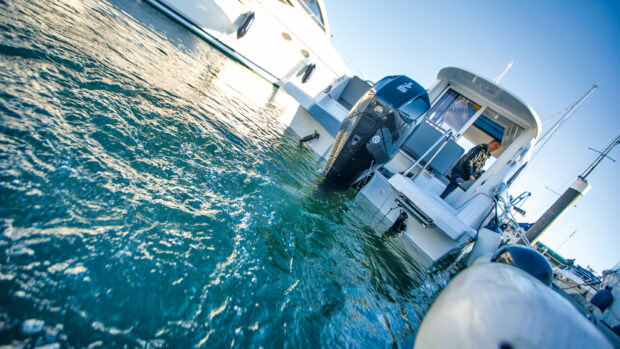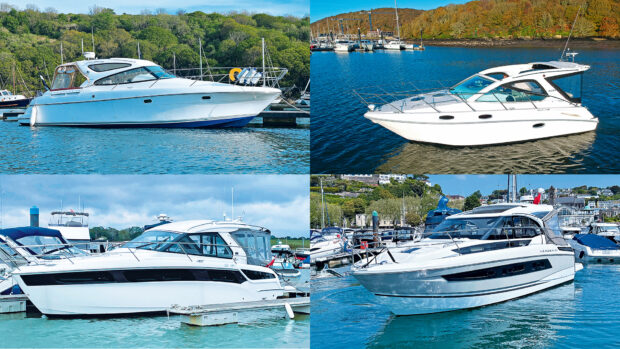Motorboat & Yachting's resident expert, Jon Mendez, offers up his top tips for how to mark your anchor chain
Anchoring in a pretty bay is one of boating’s greatest joys but it can also be a cause of considerable angst: How much chain should I put out? What’s the seabed like? Will I get stuck? What if I drag?
Many of these concerns can be solved by laying the correct amount of cable (called scope) for the depth and conditions.
There are many possible configurations of anchor rode: all-chain (recommended for boats over 40ft); a mix of chain and rope (usually the boat’s length of chain plus 10 times the amount of rope); or 5m of chain and 20 times the boat length of rope. It doesn’t matter too much what you have as long as you let out enough of it to hold you stationary.
With an all-chain set up I find that four times the depth gives good holding without excessive snatch if the wind picks up. With a combination of chain and warp, I find six times the depth has the same effect.
In both cases, you need to know the depth, calculate how much rode you need to put out and have a means of counting it. There are several ways to gauge this; the simplest is to use time – if it takes 1 second for your windlass to let out 1m of chain then it will take 20 seconds to let out 20m of chain etc. This works well if your anchor windlass runs at a consistent speed and you have an accurate means of timing it.
Article continues below…

How to check your chartplotter’s accuracy

How to navigate overfalls in a motorboat: 6 top tips
Some boats have an automatic anchor chain counter fitted, sadly I have yet to encounter one which works reliably without constantly needing to be recalibrated. So, my preferred option is to mark the anchor chain.
There are various ways to do this but your first task is always to empty the chain out of the locker and lay it out on the ground or pontoon, taking the opportunity to clean out the locker and check the bitter end is lashed to the U-bolt with strong but cuttable cord rather than a rusty shackle that could prove difficult to undo or cut in an emergency.
Now measure from the anchor fitting to the water, as you shouldn’t include this in your calculations. For instance if your anchor is 2m above the waterline when stowed, you need to add that 2m to your first measure. Then you just mark it at 5m intervals, so in this case make your first mark at 7m, then measure another 5m and mark it 10m, 15m, 20m etc.
The simplest way to mark the chain is by painting the links with a different colour for each depth, but if you anchor often, this soon wears off. Coloured cable ties are another cost-effective and easily replaced method.
Better still are the coloured plastic anchor chain markers you can buy online and in some chandleries, although you do need to know your chain link size for them to fit correctly. If in doubt let out more rode than you think, as it’s no use left in the locker.

1 Tools for the task
The simplest and cheapest method is to use a handful of different-coloured cable ties but you can buy proper plastic chain markers if you know how what size your chain links are.
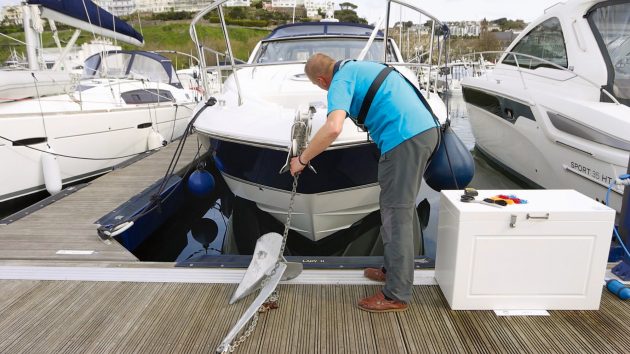
2 Remove the chain
Carefully take the chain out of the locker and lay it out on the pontoon so it’s easy to measure. Now is a good time to clean out the locker and check the state of your chain and fixings.
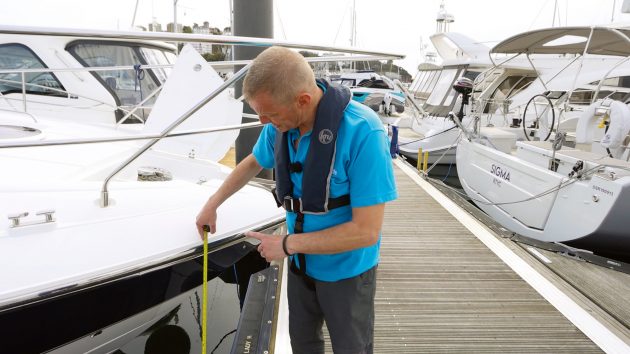
3 Find the starting point
Measure the distance from the anchor stowage point to the water so your starting point is where the chain touches the water rather than end of the roller – in this case, 1.4m.

4 Make your mark
Mark the starting point clearly so that when you are retrieving the anchor you know when it is clearing the water and can slow down the winch accordingly. I used red cable ties for maximum visibility.
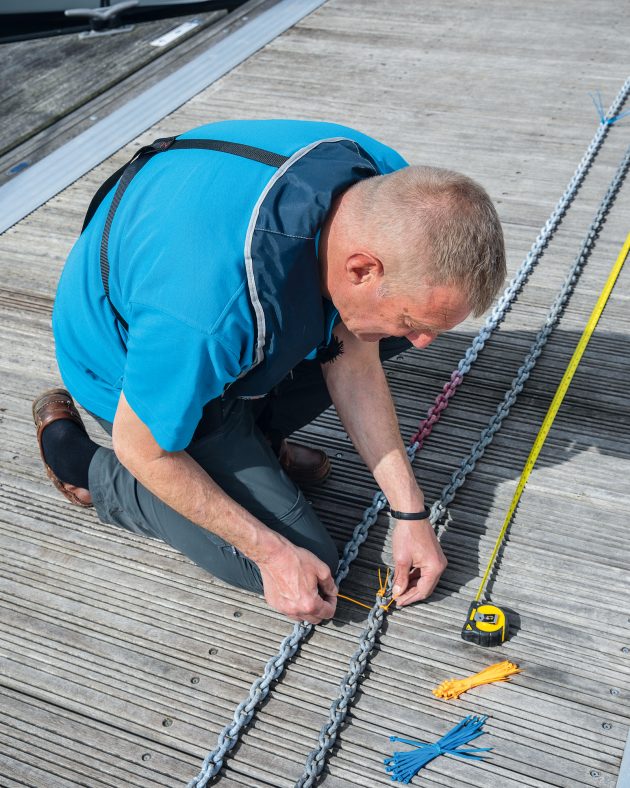
5 Colour coding
Now mark it every 5m with either a different colour each time (if you can find and remember them) or alternating colours for every 5m. I chose orange for 5m, 15m, 25m and 35m, and blue at 10m, 20m and 30m.

6 End marker
I finished with more red ties at 40m to show me that the chain is almost all out. Lastly, I produced a little table to stick next to the helm and help me remember.
 If you enjoyed this….
If you enjoyed this….
Motor Boat & Yachting is the world’s leading magazine for Motoryacht enthusiasts. Every month we have inspirational adventures and practical features to help you realise your sailing dreams, as well as tests and news of all the latest motorboats.
Plus you’ll get our quarterly Custom Yachting supplement where we share the last on offer in the superyacht world and at the luxury end of the market.
Build your knowledge with a subscription delivered to your door. See our latest offers and save at least 30% off the cover price.





 If you enjoyed this….
If you enjoyed this….